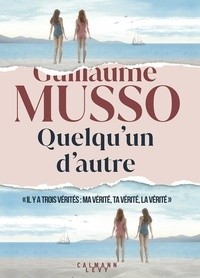En cours de chargement...
The Eye Of The Lynx. Galileo, His Friends, And The Beginnings Of Modern Natural History
45,10 €
Neuf
Expédié sous 6 à 12 jours
Livré chez vous entre le 3 mai et le 10 mai
En librairie
Résumé
Some years ago, David Freedberg opened a dusty cupboard at Windsor Castle and discovered hundreds of vividly colored, masterfully precise drawings of all sorts of plants and animals from the Old and New Worlds. Coming upon thousands more drawings like them across Europe, Freedberg finally traced them all back to a little-known scientific organization from seventeenth-century Italy called the Academy of Linceans (or Lynx-eyed). Founded by Prince Federico Cesi in 1503, the Linceans took as their task nothing less than the documentation and classification of all of nature in pictorial form. In this first book-length study of the Linceans to appear in English, Freedberg focuses especially on their unprecedented use of drawings based on microscopic observation and other new techniques of visualization. Where previous thinkers had classified objects based mainly on similarities of external appearance, the Linceans instead turned increasingly to sectioning, dissection, and the observation of internal structures. They applied their new research techniques to an incredible variety of subjects, from the objects in the heavens studied by their most famous member Galileo Galilei - whom they supported at the most critical moments of his career - to the flora and fauna of Mexico, bees, fossils, and the reproduction of plants and fungi. But by demonstrating the inadequacy of surface structures for ordering the world, the Linceans unwittingly planted the seeds for the demise of their own favorite method - visual description - as a mode of scientific classification. Profusely illustrated and engagingly written, Eye of the Lynx uncovers a crucial episode in the development of visual representation and natural history: And perhaps as important, it offers readers a dazzling array of early modern drawings, from magnificently depicted birds and flowers to frogs in amber, monstrously misshapen citrus fruits, and more.
Sommaire
- BACKGROUND
- The Paper Museum
- Lynxes
- ASTRONOMY
- The New Star
- The Telescope: Imperfection in the Heavens
- The Conflict of Truths
- NATURAL HISTORY
- The Chastity of Bees
- The Microscope and the Vernacular
- Plants and Reproduction
- The Mexican Treasury: Taxonomy and illustration
- The Doctor's Dilemmas: Description, Dissection, and the Problem of Illustration
- Fossils
- PICTURES AND ORDER
- The Failure of Pictures
- The Order of Nature
- The Fate of Pictures: Appearance, Truth, and Ambiguity
Caractéristiques
-
Date de parution16/12/2002
-
Editeur
-
ISBN0-226-26147-6
-
EAN9780226261478
-
PrésentationRelié
-
Nb. de pages520 pages
-
Poids1.59 Kg
-
Dimensions18,5 cm × 26,0 cm × 3,4 cm
Avis libraires et clients
Avis audio
Écoutez ce qu'en disent nos libraires !




